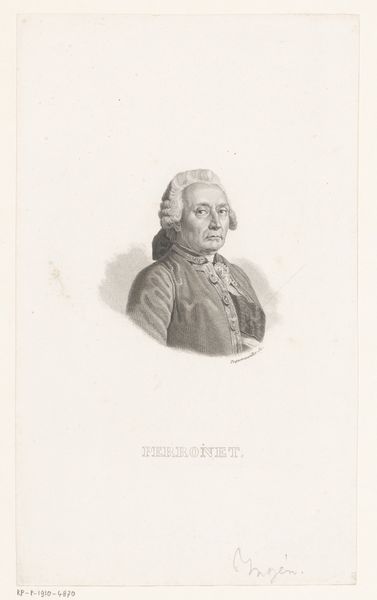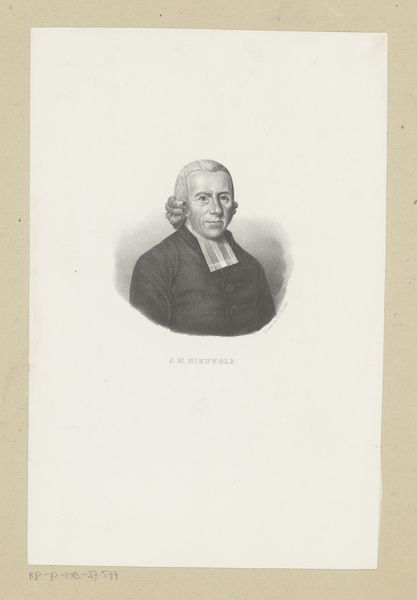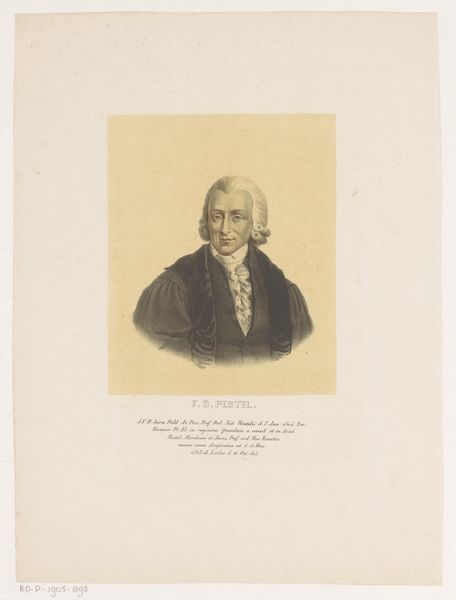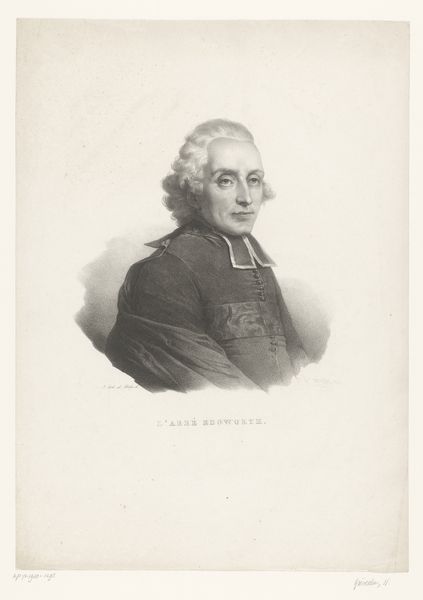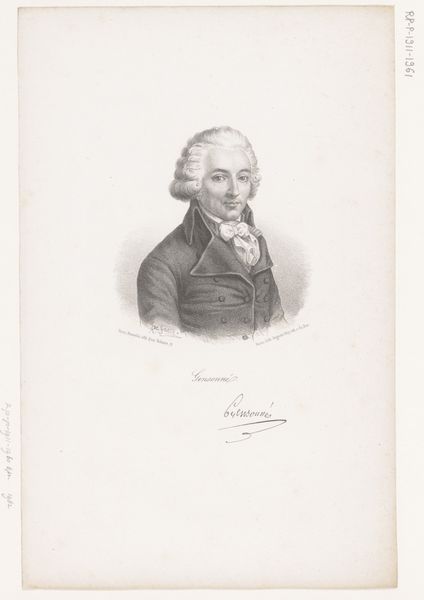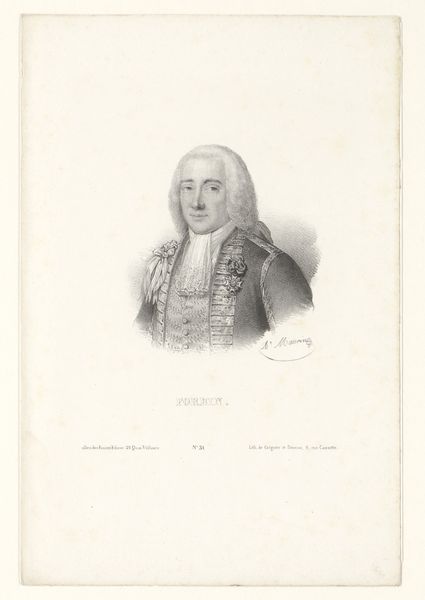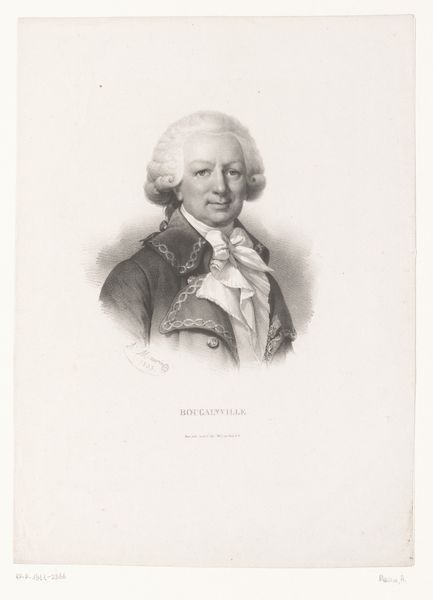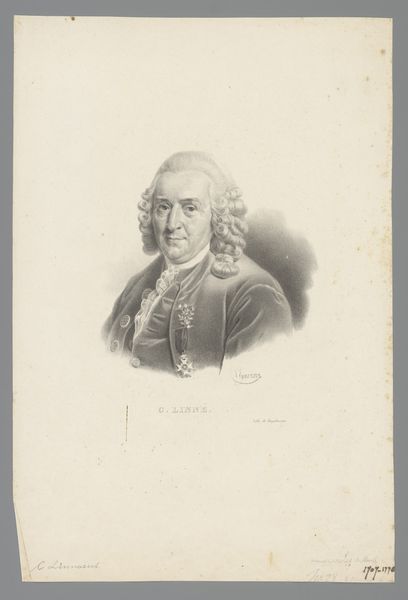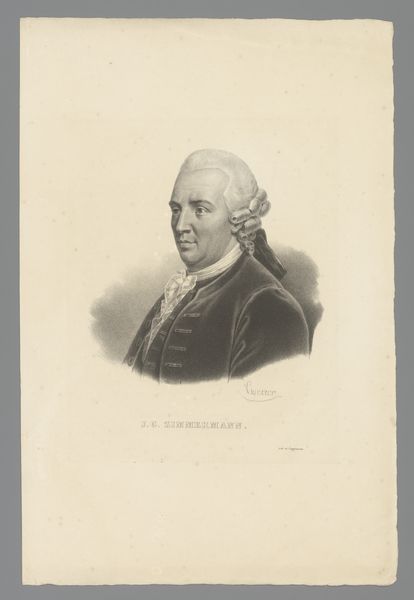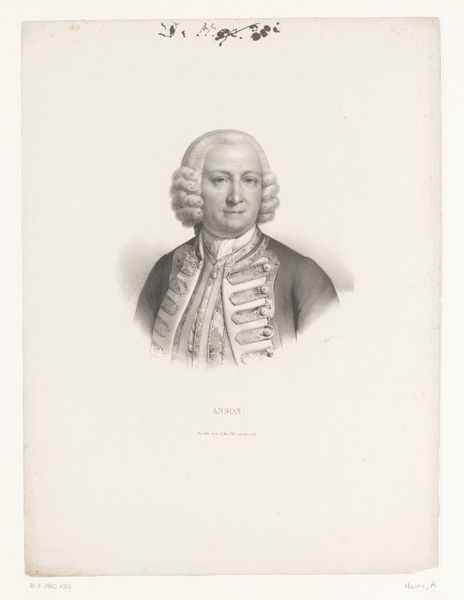
engraving
#
portrait
#
pencil drawn
#
neoclacissism
#
old engraving style
#
engraving
Dimensions: height 245 mm, width 156 mm
Copyright: Rijks Museum: Open Domain
Editor: Here we have a piece entitled "Portret van F. Armand," an engraving from between 1801 and 1847, created by Pierre François Bertonnier. There's a quiet dignity about the subject, and the delicate lines give it an almost ethereal quality. What stands out to you in this work? Curator: What immediately catches my eye is how Bertonnier uses the visual language of Neoclassicism to depict F. Armand. This wasn't just about replicating appearances; it was about encoding status and conveying specific values. The symmetry, the clear lines, and the restrained emotion – these all speak to a desire for order and rationality. Editor: Order, yes, I definitely see that in the composition. But what about the specific symbolism? The subject is wearing what looks like religious attire. Curator: Indeed. The clothing immediately places him within a specific societal role. And consider the medal he's wearing – a clear marker of achievement and recognition within his community, imbuing this portrait with further layers of meaning. What do you think this medal communicates to its viewers? Editor: Perhaps the medal alludes to service and merit, emphasizing his contribution to society? It almost seems intended to portray Armand as an upstanding individual, even a pillar of the community. Curator: Precisely! Bertonnier has harnessed these symbols to construct a very deliberate image. By recognizing and understanding these visual cues, we gain deeper insights into the world the artist was creating and the message he was conveying. Editor: It’s amazing how much meaning can be packed into a single image. Thanks for helping me to unlock this portrait's historical context! Curator: My pleasure! It's these layers of visual history and meaning that make studying art so rewarding.
Comments
No comments
Be the first to comment and join the conversation on the ultimate creative platform.
